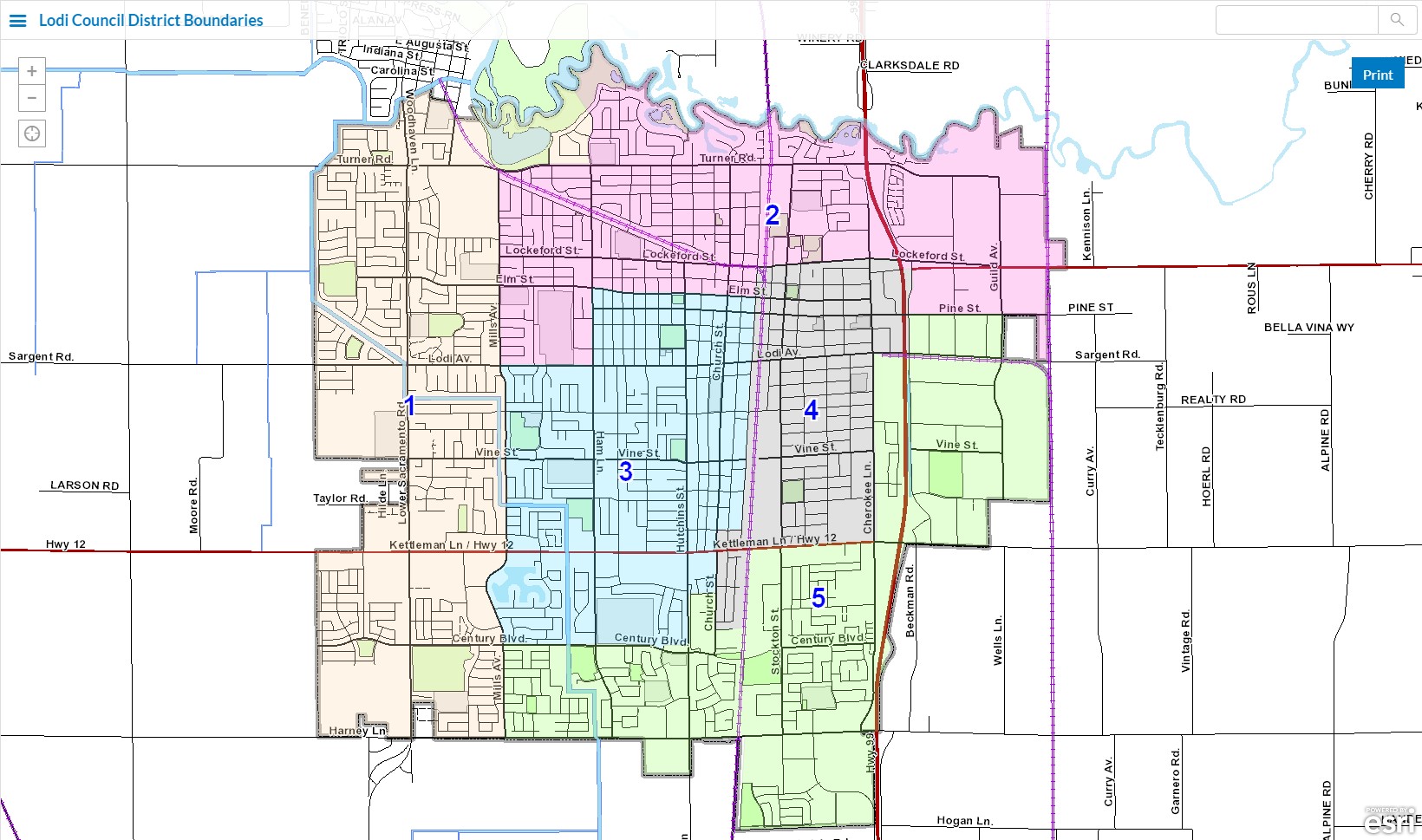During the June 2, 2021 Lodi City Council meeting, the City Clerk notified the public of redistricting for future City Council elections.
Jennifer Cusmir, Lodi’s City Clerk, gave a short presentation and asked for direction on the creation of a new map for future City Council elections. Though Lodi barely adopted by-district elections in 2018, the map and district boundaries were based off of 2010’s Census data. With 2020’s Census data now available, each city that holds by-district elections are mandated to redistrict. The City Manager stated that the deadline is April 17, 2022, though that could be because Lodi does not hold primaries earlier in the year.
Additionally, City Clerk Cusmir asked the Council for direction on the creation of a redistricting commission. She provided four options which are outlined in the image below.
After a brief discussion and zero public comment, the Council concluded that a separate commission will not be necessary, but instead they will consult the public as they previously did.
In 2018 the City Council asked the public to create various maps using an online tool. Computers were also provided at the Lodi Library for citizens to customize and submit their own maps. The Council then narrowed the options down and selected the map that is used today with consultation from the public. The map that was accepted was created by a long-standing member of the community and submitted through the Chamber of Commerce, according to Council Member Kuehne.
The law requires that redistricting must have a balanced set of criteria which are outlined below, though at the end of the criteria the following is written, “The Council may choose to include some, all, or none of these criteria, or may choose to outline a unique set of criteria that Council Members believe are applicable to the City of Lodi.”
- Population equality across districts. “Districts shall be as nearly equal in population as may be.” (Elections Code §21601 and Government Code §34884.)
- Race cannot be a “predominant” factor or criteria when drawing districts. (Shaw v. Reno (1993) 509 US 630; Miller v. Johnson (1995) 515 US 900; and Cooper v. Harris (2017) 137 S.Ct. 1455.
- Compliance with the Federal Voting Rights Act, which among things, prohibits districts that dilute minority voting rights, and encourages a majority-minority district, if the minority group is sufficiently large, and such a district can be drawn without race being the predominant factor. (Bartlett v. Strickland (2009) 566 US 1.) Pursuant to Elections Code section 21601 and Government Code section 34884, the City Council may consider the following factors when establishing districts:
- The City Council may (i) plan for future growth, (ii) consider boundaries of other political subdivisions, (iii) consider the physical/visual geographical and topographical features, whether natural or manmade, and (iv) to the extent possible avoid head-to-head contests between incumbents.
At the end of the agenda item’s discussion, Mayor Alan Nakanishi made the following comment at the 44:32 mark:
“The reason we did this was because we were trying to get a minority district. I think doing it the way we did, we should keep control of this and not give it to advisory, hybrid, independent because it’s a very powerful committee. So I agree, we can do the same thing. The council will get the experts and give us various maps and give input and go that route, so I’m for that. I agree with my other city council members that the city council should keep the power of this districting.”
-Lodi Mayor Alan Nakanishi, June 2, 2021
Previous to 2018, Lodi City Council Members were elected in an at-large election. The five Council Members were selected based off of majority vote from Lodi’s voting population, meaning a single area of Lodi could have elected the entire Council, and it was possible for all of the Members to live in the same area.
The City was then threatened with litigation by the Mexican American Legal Defense and Education Fund because the at-large elections claimed to dilute the Latino vote. Lodi has a large Hispanic population but has never elected a Hispanic Council Member. The Council attempted to resolve this by creating a district that was majority Hispanic (District 4), as is evident based off the current by-district data and Mayor Nakanishi’s comments.
However, District 4 did not elect a Hispanic representative during 2020’s elections, but instead chose Council Member Shak Khan, a Council Member with Pakistani heritage. District 5 elected Mikey Hothi, a Council Member with Indian heritage. Districts 1, 2, and 3 will all be up for election in 2022 and will be under a new district map.
The next City Council Meeting is scheduled for the evening of June 16, 2021 and will have public comment for the mandated redistricting.
